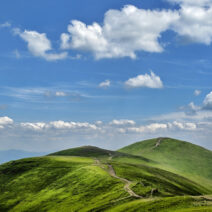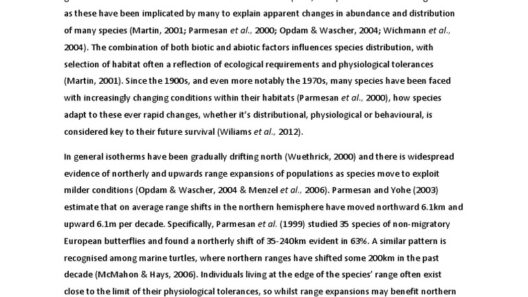The climate in Sweden is as diverse as its geography, with long, frigid winters and the enchanting phenomenon known as the ‘midnight sun’ in summer. This Scandinavian nation, characterized by its vast forests, sprawling lakes, and picturesque archipelagos, presents a unique climatic tapestry that beckons exploration and understanding. With an array of flora, fauna, and atmospheric phenomena, Sweden’s climate is an invitation to rethink conventional weather patterns and their implications for life, culture, and environment.
To comprehend the climate in Sweden, one must first consider its geographical expanse. Stretching from the temperate southern regions to the Arctic north, Sweden showcases a range of climatic zones. The southern territories experience a temperate climate, while the northern areas border on subarctic conditions. This transition creates profound differences in weather patterns, temperature fluctuations, and daylight variation throughout the year.
Winters in Sweden are notoriously long and often harsh. From November through March, the country is cloaked in a blanket of snow, with temperatures typically dipping below freezing. In the northern regions, the mercury can plunge to an astonishing -30 degrees Celsius (-22 degrees Fahrenheit) or lower. Yet, rather than deterring outdoor activities, the Swedish embrace of winter sports, such as skiing and ice skating, transforms the cold season into a time of conviviality. Cities like Stockholm and Gothenburg break the frost with a plethora of winter festivals, where warm beverages and local cuisine provide comfort against the chill.
Interestingly, this frigid climate also allows for captivating natural phenomena. The northern lights, or aurora borealis, paint the skies with vibrant hues of green, pink, and purple during the long winter nights. Tourists and locals alike venture into the wilderness to witness this ethereal display, further enriching the cultural significance of Sweden’s climate.
While the winters can be stark, summer in Sweden is a revelation. From late June to early August, the country basks in the glow of the midnight sun. This phenomenon, where the sun remains visible throughout the night, is most pronounced in the far north, but even central and southern Sweden experience significantly extended daylight hours. The psychological impact of such prolonged sunlight on the populace is profound; it fosters a spirit of optimism and encourages outdoor social interactions, festivals, and activities. The long summer days are often spent in nature—hiking, swimming, and exploring the verdant landscapes.
Climate plays an eminent role in shaping Sweden’s cultural identity and lifestyle. Swedes are known for their deep connection with nature, articulated through the concept of “friluftsliv,” or “open-air living.” This philosophy encourages individuals to embrace the outdoors, regardless of the weather, and fosters an appreciation for Sweden’s vast wilderness. The seasonal extremes drive not only outdoor recreation but also agricultural practices. While northern regions may focus on hardier crops due to shorter growing seasons, southern Sweden enjoys a rich agricultural bounty, including fruits, vegetables, and cereal grains.
However, as with many regions worldwide, Sweden’s climate is vulnerable to the implications of climate change. Shifting weather patterns, increased precipitation, and rising temperatures threaten the delicate balance of this ecosystem. As winters become milder and summers grow hotter, the integrity of Sweden’s natural landscapes and the species that inhabit them are at risk. This transformation raises pressing concerns regarding biodiversity, water resources, and forest management.
The Swedish government has proactively sought to address these environmental challenges through ambitious climate policies. The country is a front-runner in sustainability initiatives, committing to carbon neutrality by 2045. Investment in renewable energy sources, such as wind and solar power, underscores a nationwide effort to mitigate climate change while bolstering economic resilience. Such measures are not merely reactive; they represent a larger collective ethos toward preserving the pristine beauty of Sweden’s natural environment for future generations.
Moreover, Sweden’s climatic contrasts have a profound impact on its wildlife. The vast forests are home to a diverse range of species, from moose to wolves to a myriad of birds. The seasonal shifts dictate migration patterns, breeding cycles, and food availability. Understanding these dynamics is crucial for wildlife conservation efforts, which have become increasingly vital as human activity encroaches upon natural habitats.
In conclusion, Sweden’s climate presents a dual narrative of harsh winters and invigorating, sun-drenched summers. The extreme seasonal variations foster a unique cultural identity that deeply intertwines with the environment. As this Scandinavian nation grapples with the realities of climate change, it stands poised to engage the world in dialogues regarding sustainability and environmental stewardship. Sweden invites scrutiny and admiration alike—a climate that challenges perceptions and cultivates an appreciation for the delicate balance of nature and culture.
Ultimately, the climate in Sweden serves as a microcosm of broader global environmental issues. It is not only a backdrop for stunning landscapes and cultural practices but also a call to action to protect our planet. Discoveries await those willing to engage deeply with Sweden’s diverse climate, offering promises of transformed perspectives on nature—its challenges and its breathtaking beauty.






